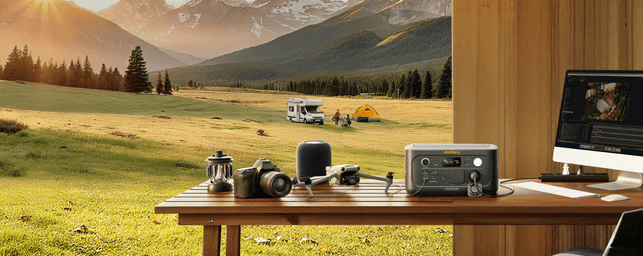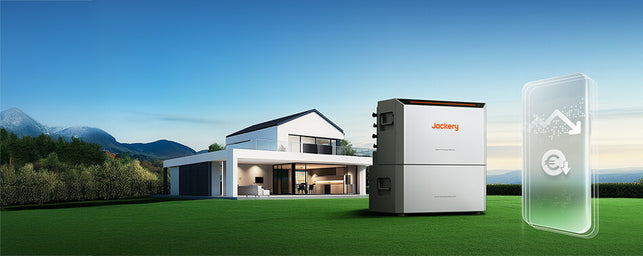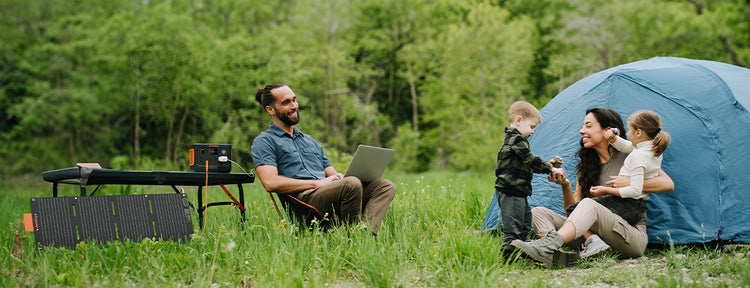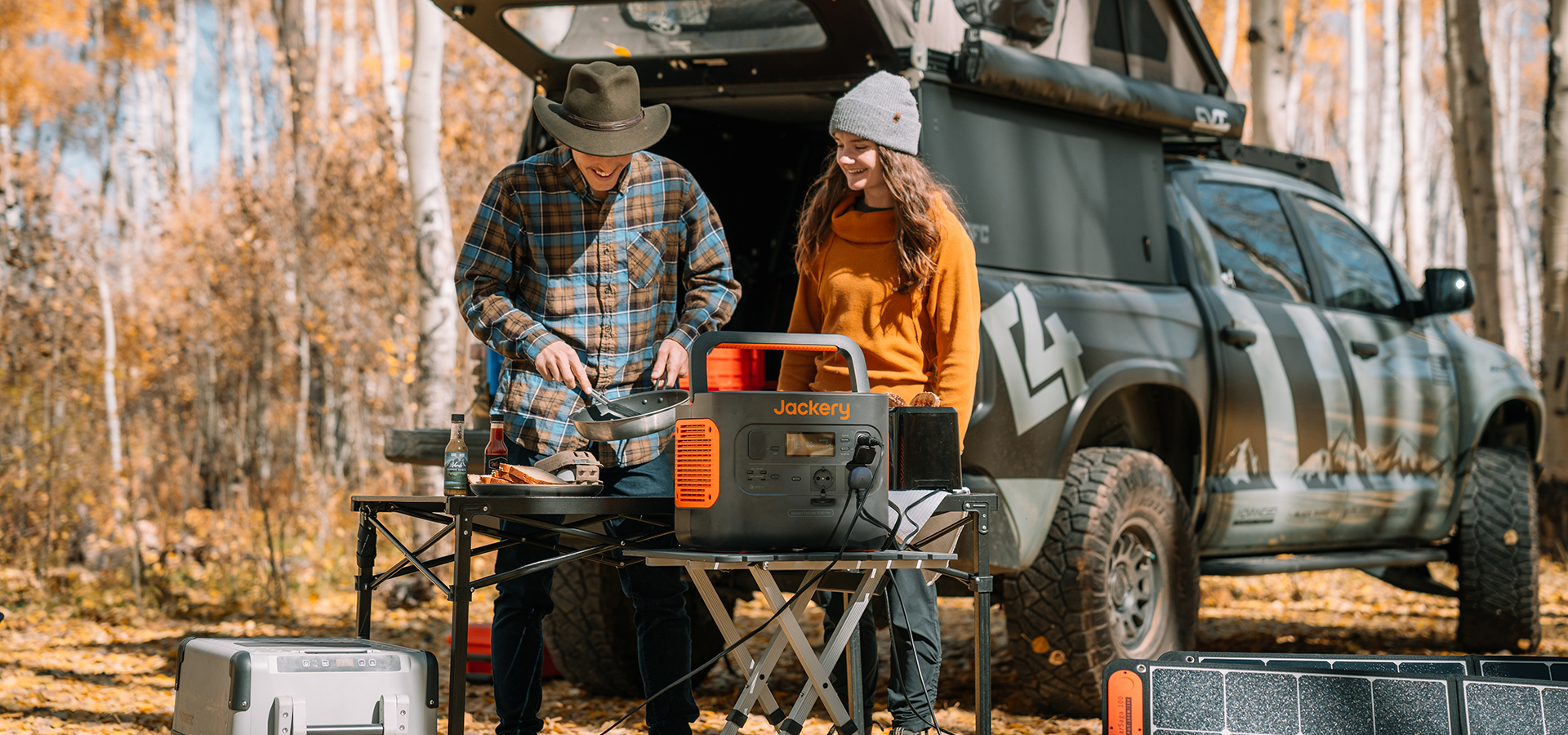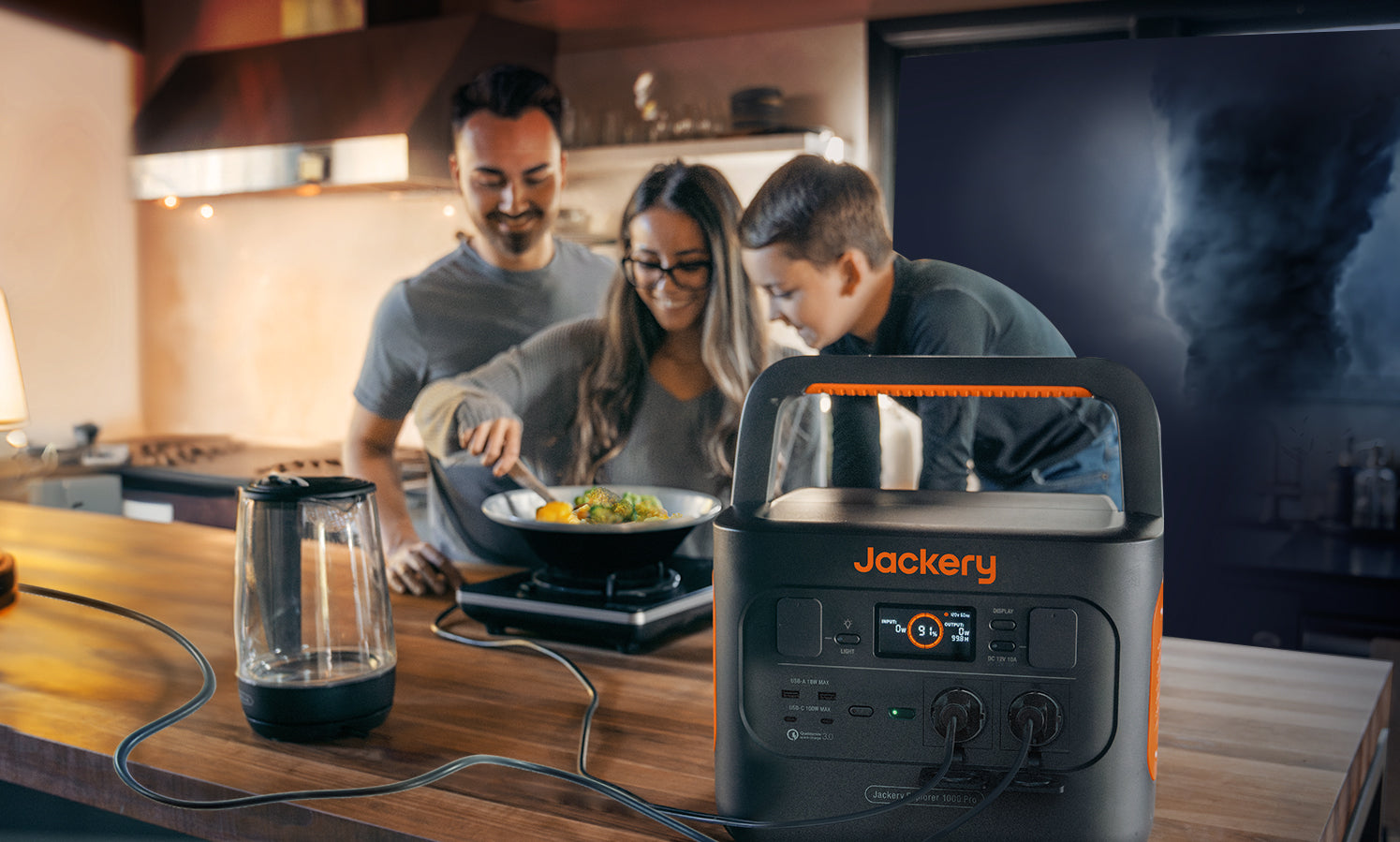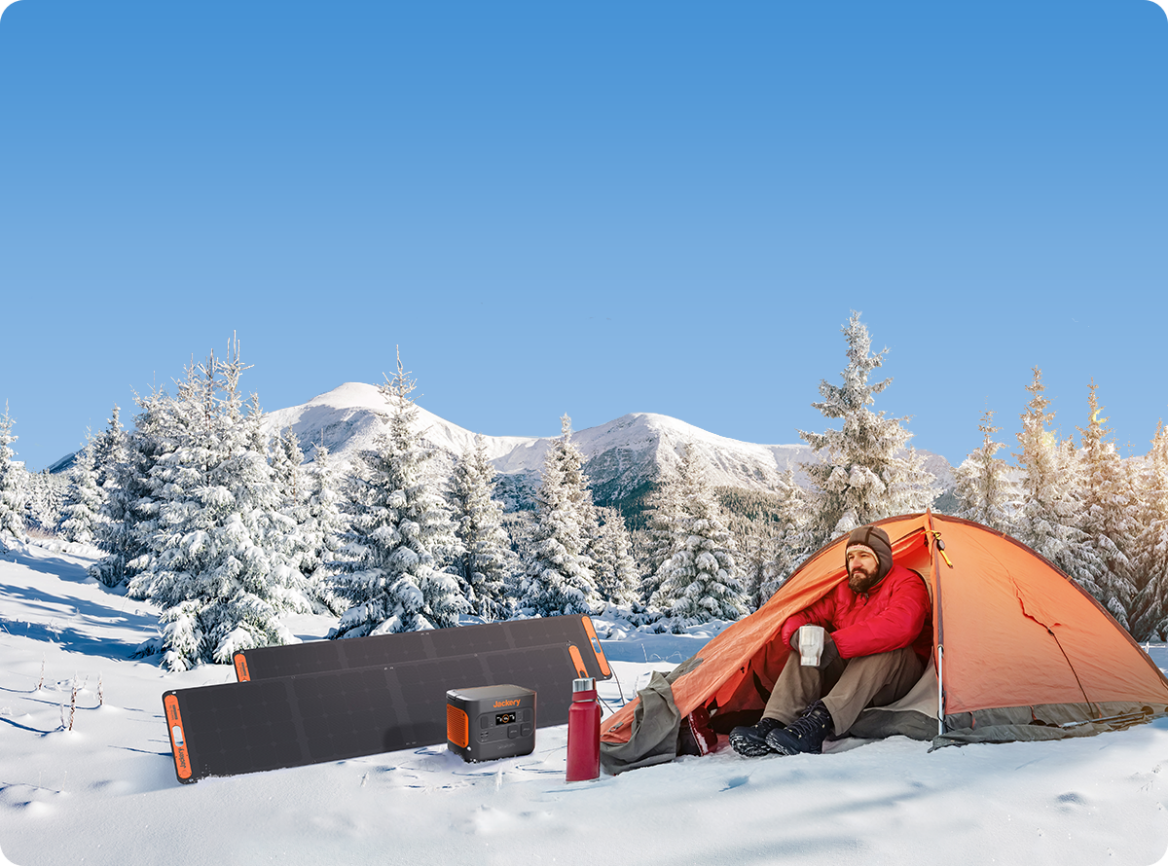Camping Essentials for a Functional Kitchen Setup
Essential Gear: Stoves, Utensils, and Storage
When setting up a camping kitchen in Europe, choosing the right portable stove is key due to fuel regulations across countries. E.g., gas canisters using EN417 threading are available in most European regions. Stoves compatible with these canisters are reliable. However, for long trips in remote areas, consider multifuel stoves. Cooking utensils should prioritize lightweight, non-stick options (titanium or anodized aluminium cookware), which resist corrosion and are durable.
Add a heat-diffusing plate for even heat distribution for simmering sauces or delicate dishes. Cutting boards should be foldable or flexible food-grade silicone to conserve space and allow easy cleaning. Coolers for camping kitchens must have insulation, which can preserve ice for multiple days. Yet, in cooler climates, consider thermoelectric options. Include dry storage bins to separate perishables from other cooking supplies to avoid contamination risk.
Space-Saving and Multi-Purpose Tools
Compact, multi-functional tools are key to a camping kitchen to decrease bulk without losing utility. For instance, choose a spork instead of separate utensils. Opt for collapsible silicone bowls that double as mixing and serving dishes and take up slight space when not in use. Another must-have is a foldable dish rack with cutlery storage for drying and organization of utensils. Moreover, pack nesting pots and pans that stack into one another, including a lid that works as a skillet.
For food preparation, a knife with a sharpener gives precision cutting without extra gear. A roll-up pouch can store peelers, graters, and lightweight tongs. Don't overlook a compact windscreen for your stove. It boosts fuel efficiency and cooking performance in windy conditions. Opt for squeezable silicone bottles with secure caps to avert leaks when packing oil, sauces, or condiments. It updates your camping kitchen so that you're prepared for cooking demands.
Lighting and Nighttime Functionality
Visibility during night cooking matters in a camping kitchen setup. Lighting makes the difference. A camping lantern with adjustable brightness offers omnidirectional illumination. It can also double as a USB power bank for charging small devices. Solar-rechargeable lanterns, including models with kickstands for directional lighting, suit Europe's long summer days.
For precision while cutting or cooking at night, include a headlamp, which offers focused, hands-free light and adjustable intensity. Mountable LED strips can be affixed to a canopy or tent frame. They provide ambient lighting that is less harsh than a lantern. Pack spare batteries or a camping power station for safety and portability. Low temperatures in alpine or northern regions can deplete battery life. Consider a red-light mode for your lighting devices. It cuts glare and preserves night vision to adapt to transitions between light and darkness. Lighting gives smooth meal preparation and the safety of your camping kitchen in low-visibility conditions.
Powering Your Camping Kitchen: Portable Power Stations
The Importance of Reliable Power for Your Camping Kitchen
When setting up a camping kitchen, reliable power is convenient and keeps efficiency, safety, and functionality. Portable stoves, refrigerators, and coffee makers demand steady wattage to operate without intervals. Smartphones, cameras, and drones are key when recording your camping experience or accessing navigation apps. Power outages in such scenarios can compromise meal preparation, safety, and your camping experience. Our portable power stations give supply and reliability when unexpected weather or terrain conditions affect power availability.
Jackery's Portable Power Stations: A Tailored Solution for Camping Kitchens
Camping kitchens demand compact and reliable power sources. Jackery's portable power stations meet such needs with capacity and transport ease. Our range includes models with capacities from 99Wh to 3024Wh for minimalistic and extensive setups.
In addition, all our stations support AC, USB-A/C, and car charging for flexibility in outdoor settings. Plus, our integration with solar panels gives sustainable and renewable power. It matters when camping in remote European locations with limited charging facilities. It renders our power stations indispensable for anyone maintaining a high-functioning camping kitchen.
Why the Explorer 1000 v2 is Perfect for a Camping Kitchen
The Jackery Explorer 1000 v2 Portable Power Station can also power a camping kitchen. It has a 1070Wh capacity and a 1500W AC output to run high-power microwaves and a portable refrigerator. Its LiFePO4 battery gives 4000 charge cycles for a decade of daily use. At 23.8 pounds and 18% smaller than its predecessor, it's portable. Furthermore, it has a foldable handle that lets it fit in your vehicle's storage compartment.
The ChargeShield 2.0 technology also provides UPS functionality with a switchover time of ≤20ms for CPAP machines. Its app-controlled emergency charging mode gives rapid recharge within about one hour. It is important when time-sensitive kitchen tasks demand constant power. With support for solar, AC, and car charging, the Jackery Explorer 1000 v2 Portable Power Station guarantees that you can stay powered, regardless of location or access to grid electricity. Such characteristics make it a trustworthy and useful camping kitchen power source.

Smart Storage and Meal Prep Tips for Camping
Strategic Ingredient Organization and Waste Minimization in Camping
Organizing ingredients for a camping kitchen needs precision for efficiency and waste reduction. Categorize ingredients into perishable, semi-perishable, and non-perishable groups. Use transparent, food-safe containers and vacuum-sealed bags for raw proteins to outspread freshness. Label them with contents, preparation dates, and priority consumption orders.
Portion them into stackable jars with silicone seals for dry goods. Tag them with colour-coded stickers indicating meal usage (green for breakfast, red for dinner). Plan meals with overlapping ingredients to diminish leftovers, including using chopped vegetables for stir-fries and soups. If refrigeration is limited, pre-freeze meals in flat, stackable freezer bags to exploit cooler space and act as ice packs. For powdered milk or cheese, decant into reusable bags with waterproof labelling. Besides, practice FIFO for perishables and dry goods to lessen spoilage and repurpose food scraps. For instance, vegetable peels can be used for broth or stale bread for croutons.
Optimizing Storage with Stackable Boxes and Waterproof Solutions
Stackable storage boxes are key to a well-ordered camping kitchen. Opt for heavy-duty polypropylene crates that are interlocking and lightweight for durability under changing weather conditions. Consider boxes with modular dividers to segregate utensils, condiments, and ingredients. For example, allocate one box for dry goods, another for perishables, and a third for cookware. Meanwhile, label each on multiple sides for quick identification.
Use collapsible silicone containers to save space once emptied. Waterproof bags safeguard spices, which can clump in high humidity. They also help protect portable stoves or power banks. Roll-top dry bags with IPX7 ratings work well for emergency ration packs and matches. Use waterproof pill organizers or resealable freezer bags to organize smaller spices or snacks. For larger gear, integrate weatherproof tubs with gasket seals. When space is considerable, think vertical. Stack boxes under tarps or inside tents using rope-and-hook systems for stability.
Maintaining Hygiene in a Camping Kitchen Setup
Cleanliness in a camping kitchen boosts aesthetics, health, and safety. Establish a wash area away from cooking and food storage zones to thwart cross-contamination. Use collapsible sinks with compartments for washing and rinsing. Bring biodegradable soap to curtail environmental impact. It should be phosphate-free to preserve local water ecosystems. Invest in a microfiber drying mat or mesh racks for drying. It stops bacteria buildup on damp surfaces. Between meals, wipe all surfaces with pre-soaked disinfectant wipes stored in airtight containers for efficacy.
For dishwashing tools, use a scrubbing sponge with a hard-wearing scouring pad. Store it in ventilated bags to inhibit mould. If using open flames or portable stoves, clean burners with a wire brush to stop grease buildup, which can attract pests. Dispose of grey water and filter solids with a fine mesh strainer. Last but not least, to maintain order, pack all food in sealed containers after meals. Remember, you must keep the camping kitchen free from wildlife intrusion.
Enhancing Your Camping Experience with Sustainable Practices
Eco-Friendly Practices: Elevating Your Camping Experience with Sustainability
To make your European camping trip more sustainable, cut waste and guarantee your practices have no environmental impact. Diminish single-use plastics. Swap out traditional water bottles for collapsible silicone or SS versions that are lightweight and durable. Opt for reusable silicone zip bags for your camping kitchen to store food instead of disposable plastic wraps. They are easy to clean and suit outdoor conditions. Biodegradable dish soap is key, too. Choose one that meets EU eco-certification standards so it doesn't harm aquatic life when rinsed off. Pair it with a collapsible silicone sink to cut water wastage and direct runoff into greywater disposal zones.
Apart from that, instead of paper towels, carry more efficient reusable microfiber cloths. Use compostable trash bags and separate waste for recycling when on the trail. Many European campgrounds provide waste sorting facilities. For cooking, consider portable, refillable stoves, which produce cleaner combustion than wood fires. If firewood is unavoidable, use sustainably sourced briquettes to abate deforestation. Last of all, multi-purpose gear, including sporks and foldable cookware, can decrease load and consumption. They are also compact and resourceful. With such measures, you can set a new standard for sustainable camping.
Portable Power Stations: A Game-Changer for Sustainable Outdoor Energy Needs
Portable power stations benefit eco-conscious campers for a sustainable alternative to gas generators. Unlike outmoded generators, they operate silently for wildlife conservation and preserve the tranquillity of nature in European campsites. Lithium-ion models have increased energy density to store power for multi-day use and are compact. They can charge smartphones, cameras, and camping kitchen mini-fridges or electric kettles. Many power stations support solar charging with efficient photovoltaic panels for Europe's miscellaneous climates.
As an example, pairing a 100W foldable solar panel with a 500Wh power station can provide energy to run LED lights or recharge a laptop. When choosing one, look for units with MPPT controllers. They optimize solar energy absorption under partial cloud cover. They are also safer than outdated generators, emit no fumes or CO, and back European campsite regulations. Models might include pure sine wave inverters so the power output is stable and safe for electronics. With a portable power station for camping, you embrace clean energy, promote sustainable tourism, and enjoy a hassle-free experience.

Conclusion
Jackery's portable power stations power all your necessary gadgets, rendering outdoor cooking in Europe safer and easier. They can power portable stoves, refrigerators, and coffee machines without interruption and keep meals hot and beverages cool when camping. They also minimize open flames and cut fire dangers while keeping you safe in unexpected conditions.
Their tiny size makes them simple to transport, while solar, AC, and automobile charging choices let you remain powered in distant regions. Models like the Jackery Explorer 1000 v2 Portable Power Station feature long-lasting capacity, so your gadgets won't die while cooking. When cooking at night, LED strips or lanterns provide necessary illumination. They also employ solar panels to be eco-friendly and comply with European camping rules. Whether cooking a gourmet dinner or boiling water, these power stations simplify your outdoor kitchen. So if you are planning camping, don’t hesitate to carry a Jackery portable power station.

